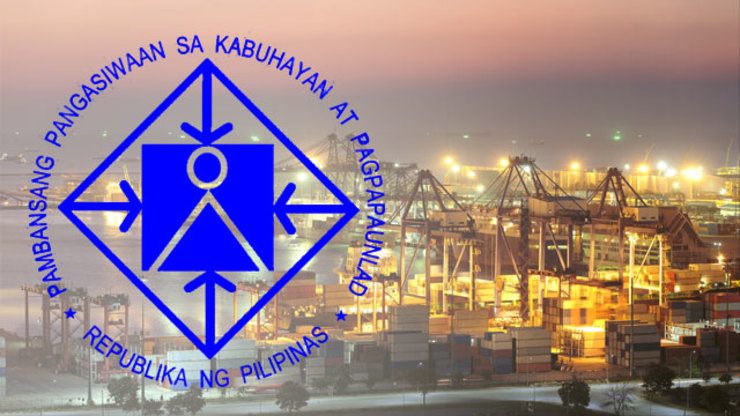SUMMARY
This is AI generated summarization, which may have errors. For context, always refer to the full article.

MANILA, Philippines – Lower imports of mineral fuels and lubricants pulled down imports by 9.6% in May, the National Economic and Development Authority (NEDA) reported on Friday, July 25.
Moreover, sluggish importation of capital goods continued to weigh on imports outturn during the period, NEDA Director-General Arsenio Balisacan said.
In May, the Philippines’ imports amounted to $4.77 billion, down 9.6% from the $5.27 billion recorded in May 2013, the Philippine Statistics Authority (PSA) reported.
The cumulative imports for the first 5 months of 2014 amounted to $26.34 billion, versus $24.86 billion in the same period of last year.
The value of imported goods from Association of Southeast Asian Nations (ASEAN)-member trading partners represented 27.3% or $1.3 billion of the country’s total merchandise imports.
Citing increasing regional integration and competition due to the ASEAN Economic Community (AEC) in 2015, Balisacan said the government should boost efforts to prod Philippine businesses to invest more in capital goods, which are crucial to their global competitiveness.
“In particular, higher importation of capital goods will make the technological know-how of domestic industries at par with other countries, and would likewise allow them to add greater value to Philippine-made goods,” Balisacan said.
The import of major food items declined despite current tightness in the domestic supply of food. This indicates that the country has not taken advantage of trade opportunities to stem possible upward price pressures, the NEDA chief noted.
In June, the Development Budget Coordination Committee (DBCC) raised the growth forecast for imports and adjusted its forecast for the peso-dollar exchange rate. Economic growth and inflation targets were unchanged.
Import growth forecast for the year was adjusted to 9% from 6%. For 2015, the 7% forecast was raised to 10%, while the 2016 forecast of 9% was hiked to 12%. As such, pressure from imports prompted Philippine economic managers to adjust the exchange rate from P41-P44 to P42-P45 per $1 for the year until 2016.
The higher import target was due to post-typhoon reconstruction efforts and expectations of rising investments.
Electronic products as top import
The decrease in total imports for May was due to the negative performance of 4 out of the top 10 major commodities that month, namely mineral fuels, lubricants and related materials, cereals and cereal preparations, industrial machinery and equipment, and electronic products, the PSA said.
Electronic products were the top imported commodities in May, with 26.5% share and reported value of $1.27 billion, down 1.2% from $1.28 billion in May 2013. Among electronic products, components/devices (semiconductors) had the biggest share of 21.6% or $1.03 billion, up 2.6% from $1 billion in May 2013.
Shipments of mineral fuels, lubricants, and related materials ranked second, accounting for 13.9% of the total import bill and amounting to $664.05 million. The amount was 43.6% lower than last year’s figure of $1.18 billion.
Transport equipment placed third with 8.9% share to total imports valued at $423.24 million, up an annual 33.6% – the highest increase among the top 10 imports.
Industrial machinery and equipment, contributing 5.4% to the total import bill, were the country’s fourth top import group for May, amounting to $256.50 million, down 9.2% from last year’s $282.58 million.
Fifth in rank were other food and live animals, with a 3.8% share of total imports valued at $182.58 million. The amount increased by 12.8% from the previous year’s level of $161.93 million.
Rounding up the list of the top 10 imports in May are the following:
- Plastics in primary and non-primary forms, $155.71 million
- Miscellaneous manufactured articles, $142.53 million
- Iron and steel, $141.24 million
- Telecommunication equipment and electrical machinery, $112.72 million
- Cereals and cereal preparations, $103.98 million
The country’s top 10 imports were valued at $3.45 billion, 72.3% of the total import bill.
China was the biggest source of Philippine imports in May, with a share of 15.2% of total imports or $724.4 million.
Recovery in near-term
Overall, the upbeat outlook and expansion plans of businesses in the industry sector for the next two quarters suggest that a recovery in capital goods imports may be expected in the near term, Balisacan said.
Surveys conducted by the Bangko Sentral ng Pilipinas revealed that the overall confidence index (CI) of businesses rose to 50.7% in the second quarter of 2014 from 37.8% in the first quarter and is expected to be sustained in the third quarter, with a CI of 48.9%.
The re-fleeting program of airline companies in line with increasing their flight routes and the government’s continuing efforts to augment power supply and to improve operational capability in search and rescue operations and in maritime law enforcement, are likely to boost merchandise imports in the coming months, Balisacan added. – Rappler.com
Shipyard file image via Shutterstock
Add a comment
How does this make you feel?
There are no comments yet. Add your comment to start the conversation.